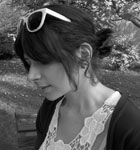|
 Money Creates Taste Money Creates Taste
Art is controversial... and with this sentence, I made a truism, that is, a universally accepted statement. A natural example would be "The sun rises from the east," whereas a modern example is the one I provided in the first sentence. Art, indeed, is controversial, especially when one knows about the limitlessness of contemporary art, and an artist who makes her art through large-scale, urban displays of truism. She, Jenny Holzer, has been setting her own truisms and displaying these in full sentences on buildings, other public places and even the sky. Her (in)famous list contains bold declarations such as "Raise boys and girls the same way," "Elaboration is a form of pollution," and the title to this article. Is this 20th century philosophy condensed to sentences? Do these words recklessly state what politicians, writers, and filmmakers can't? A feminist, pessimistic, angry, sarcastic, direct tone; one of the many ways to look at the contemporary world.
In the past few weeks, modern art has been a hotter topic in the Turkish media than it normally is, thanks to the extensive Salvador Dali exhibition held at Sabancı Museum, İstanbul, and last week's "Contemporary İstanbul" art fair. The former, I suppose, assumes the mission of spreading art to larger audiences, and the latter aimed at making İstanbul a center for contemporary art - an indefinable concept. Its afore mentioned limitlessness and recklessness comes from how it both rejects and internalizes (art) history, and this results in how it treats its subjects. Let me give current examples: Recently, Damien Hirst became the most expensive artist alive at a big auction. His artwork includes dead animals preserved in formaldehyde (the technique of "pickling," basically) and an ancient skull covered with diamonds. Meanwhile, Burhan Doğançay, a Turkish artist, expected his work, featuring a full representation of a tire shop, to be sold for a million dollars at "Contemporary İstanbul."
Forgive me. Criticism is not my intention, and any trace of it would only be stemmed from my ignorance and curiosity... or the cynical connotations that another Holzer truism brings: "Money creates taste." After suffering from hunger, oppression and, most importantly, indifference for centuries, artists, at least some of them, now seem to have reached a position where they can turn the tables: no one now knows where art can go, and where it can stop. Anything is art. The image of you reading these lines might become video art or the garbage you leave might be collected by an artist for a trash-inspired installation - wait, I'm sure somebody did this before. Though some people still think the primary target of art is to create beauty, it is now the millions that speak: millions of dollars. I must admit Im excited by this modern notion of art, not because inspiration is now turned into commodity, but because this concept fits in to the way today's world itself operates. We are living in a mild variation of the dystopia previously imagined in, to name two mainstream works, "1984" and "A Clockwork Orange;" in the aftermath and under the threat of weapons of mass destruction, an environmental crisis, and political and economic balances subject to collapse anytime. Would you expect the traditional concepts of beauty and elegance from art, or cynicism, nihilism and nonchalance?
Accepted: Despite the fact that it attracts few and is understood by even fewer, contemporary art, in all its forms - including urinals; eight-hour, single-shot films of skyscrapers; empty rooms and cans containing feces - must be the voice of the previous century, and this one, too. It's an age which created - in the American author F. Scott Fitzgerald's words - "a generation grown up to find all gods dead, all wars fought and all faith in men shaken."All you have left to look at are words on a building while you, bewildered, try to distinguish art from truth, truth from fake, fake from art.
Damla Okay(AMER/IV)
d_okay@ug.bilkent.edu.tr

|







